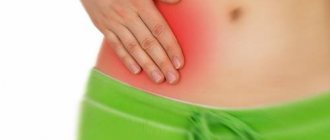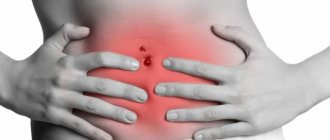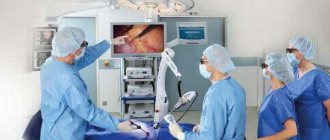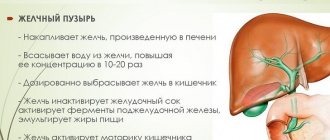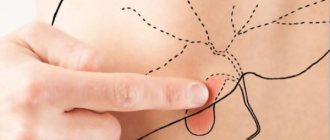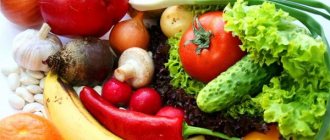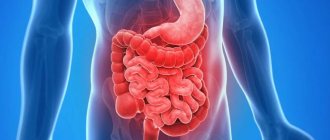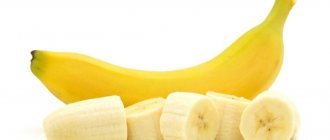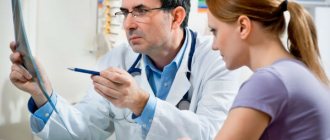Very often, the only way to cope with exacerbation of cholelithiasis and, as a result, inflammation of the gallbladder is cholecystectomy, which is indicated in case of unsuccessful fight against the disease using ultrasound methods and all kinds of diets. Of course, in the postoperative period, patients may complain of pain after removal of the gallbladder, but, nevertheless, this procedure remains today the main method of treating cholecystitis (despite the modern development of various non-surgical methods of therapy).
At the same time, many believe that if the bubble is removed, then all other problems are automatically removed. But this opinion is wrong, since, most likely, they are just beginning. Indeed, in addition to the fact that the operated person’s right side hurts after removal of the gallbladder, there is also an exacerbation of many “old” diseases that have not reminded of themselves until this time.
Bladder resection methods
Cholecystectomy is performed in two surgical ways:
- Laparoscopic. 90% of all operations are performed using this method, which is characterized by low surgical trauma and a low probability of further serious complications, as well as high efficiency. The operation is performed using a highly specialized medical instrument called a laparoscope. Using a similar method, it is possible to resect concretions (that is, stones) or the entire bladder without opening the abdominal cavity. They make only a few miniature punctures in the peritoneum and remove what needs to be removed (stones or the entire diseased organ).
- Traditional (or open). This method is used if there are large stones or serious inflammatory processes in the gallbladder cavity. In this case, the surgeon performs an extensive opening of the peritoneum (an incision of about 15 centimeters); displaces tissue, muscles and liver; then removes the gallbladder; checks the duct through which bile is drained into the small intestine for the presence of stones; then sutures the incision, leaving a small hole for drainage (in case of infection or inflammation).
Important! Both operations are performed only under general anesthesia. The duration of each of them is 2-3 hours.
Basic principle of laparoscopic surgery
The essence of the method is that 4 small punctures are made in the abdominal cavity using a stylet (that is, a device resembling a thin dagger with a vertical hole), into which hollow tubes with valves (the so-called trocars) are inserted. It is through them that a special surgical instrument is inserted to perform the necessary manipulations. In addition to them, the surgeon uses a laparoscope (it has two optical channels) connected to a monitor. That is, a specialist has the opportunity to keep the entire process under control. Through one channel, cold light is supplied to the peritoneum, and through the second, a “picture” of what is happening inside is transmitted (first to a television camera and then to a monitor). This is what technical progress means!
Important! The examination that is carried out before the operation is carried out under local anesthesia, but the surgical intervention itself is performed using general anesthesia (that is, the person being operated on does not experience absolutely any pain) and a special-purpose device that provides artificial ventilation.
To create the space in the abdominal cavity necessary for visual examination (on a screen, of course) and surgical manipulations, a sterile gas (usually carbon monoxide) is injected into it. Next, the surgeon cuts off the adhesions located around the gallbladder; pumps out excess liquid from it (if necessary); compresses the bladder duct and artery using clips; separates the diseased organ from the liver; removes it through a cosmetic puncture located in the navel area? and sews up (or seals) punctures in the fabric.
On a note! One of the punctures is not stitched up. Leave the drainage tube in it for a day. This is done in order to completely remove the antiseptic liquid (it is with this that the peritoneum is washed at the last stage of the operation in order to avoid the development of the inflammatory process). If the pathology is uncomplicated (that is, without bile entering the peritoneum), drainage is not installed.
After operation
After the above-described open-type measures, discharge is carried out approximately 7 days later, when severe pain after removal of the gallbladder will pass, and the operated person will be able to eat food painlessly, as well as move without assistance.
Even with a successfully performed open operation, for a short time the patient may experience such unpleasant symptoms as loose stools (for 7-8 weeks), vomiting, redness around the wound and hematoma, as well as sore throat (due to breathing tube) and in the abdomen (that is, at the incision site).
Important! After open surgery, which took place without any complications, surgical sutures are removed on an outpatient basis approximately 1.5-2 weeks after the manipulations. Pain after surgery to remove the gallbladder in the incision area may be felt for another 3-4 weeks, gradually decreasing. This is fine.
After resection of the gallbladder using a laparoscope, the patient is discharged after approximately 2-4 days. Of course, this happens if his health is satisfactory, the scar healing process is normal, and the patient has a good psychological mood (by the way, this is extremely important). In the evening after cholecystectomy (or, to be more precise, after the anesthesia has worn off), it is recommended to get up and start walking (of course, with the help of one of your relatives or roommates).
Important! You need to stay in the hospital exactly as long as your attending physician requires. To avoid quite serious complications in the future, you should not rush to be discharged.
By the way, during laparoscopy the surgical threads are not removed, and the suture is almost invisible. To alleviate the patient's condition, he is prescribed painkillers and non-narcotic analgesics.
What can be said about the postoperative diet:
- On the 1st day after cholecystectomy, eating is contraindicated. You can drink, but not very much.
- On the 2nd day, light food is allowed (only in moderate quantities). This can be lean boiled meat, cottage cheese, fruits, yoghurts, broth and more. You can and even need to drink without any restrictions.
- On the 3rd day, the diet can be close to normal, taking into account the wishes of the operated person.
Normal indicators for the postoperative period
The cholecystectomy performed can be traditional, which is an open operation, or laparoscopic, which is less traumatic. Laparoscopy is characterized by less tissue trauma, a shorter recovery period, and healing of wounds after surgery without the risk of hernia formation.
In the first month, pain is allowed under the shoulder blade, near the incision, in the abdomen, in the hypochondrium on the right. The pain in the abdominal cavity and right side may last for about 30 days due to the introduction of carbon dioxide into the abdominal cavity. Surgeons use this method to obtain an optimal view and expand the peritoneal cavity. The laparoscope must grasp the bubble correctly in order to remove it without damaging neighboring organs and tissues. The duration of the pain syndrome is difficult to predict, but if you strictly follow all the recommendations given by your doctor, it can disappear within three days. Experts note that to relieve pain, it is enough to walk slightly.
The abdominal type operation is performed openly, the sutures are removed after 14 days. Pain in the area of the abdominal incision is present for three weeks and gradually decreases. Performing the intervention using the laparoscopic method makes the pain much less painful, and the threads are not removed. Relief of painful symptoms is possible with the use of Ketarol or Ketanov. Mild pain after laparoscopy of the gallbladder continues for one and a half months. They should disappear in a month.
This happens due to a disruption in the digestive process, which, with the loss of the biliary organ, works in an enhanced mode. Food masses in the digestive tract must be sufficiently broken down thanks to bile. The bladder allowed this substance to accumulate and be released when eating food, directing it into the cavity of the duodenum. After cholecystectomy, bile is constantly released into the intestinal tract. It is for this reason that it is necessary to follow all the rules of diet and nutrition during the recovery period.
Read also: Causes of gallbladder rupture and fistula formation
Advantages of surgery using a laparoscope
The advantages of this method include the following:
- During the operation, only 4 incisions (relatively small) are made, which cause minimal trauma to the abdominal tissues.
- Pain after surgery to remove the gallbladder is observed exclusively in the first days after the procedure. Moreover, they are not very strong.
- The risk of injury to organs located in close proximity to the bladder is minimized.
- The patient is already 4-5 hours after the operation able to care for himself independently, as well as move without assistance.
- The formation of a small number of postoperative hernias, that is, the likelihood of serious postoperative complications, is minimal.
- The rehabilitation period is shortened, and a person’s ability to work is restored faster.
- The duration of hospital stay is only 2-4 days.
- Rapid scarring of punctures. After a couple of months they become almost invisible.
Causes of pain after removal
Amputation of this organ is scientifically called cholecystectomy. The bladder is amputated in two ways: using laparotomy - abdominal surgery with a full incision of the skin, muscles of the peritoneal wall and laparoscopy - a gentle minimally invasive intervention.
In many ways, if the operation was performed efficiently and correctly, the pain (their severity and duration) will depend on the method by which the organ was removed.
If you have undergone abdominal surgery, the recovery can be quite long. And some patients who have problems with tissue regeneration and wound healing may experience pain in the incision area for three years and three years later. If, after endoscopic removal surgery, the puncture incisions hurt in the postoperative period during the first two to three days and are relieved with painkillers, this is considered normal. Long-lasting pain and cramping in the peritoneum may be signs of various types of postoperative complications.
What can be evidenced by ongoing and intractable pain after amputation of the gallbladder? With the removal of the organ, cholecystitis, the inflammatory process, or even the remaining hard tumors, stones in the ducts did not completely go away, and the surgeon who performed the operation did not clear them. Most likely, in this case, repeated intervention will be required.
The nature of the changes occurring in the body after surgery
Why do patients worry about pain after gallbladder removal? The fact is that after the operation the human body must adapt to the new realities of its existence. Before surgery, bile accumulated in the bladder strictly between meals. And its outflow into the digestive tract to participate in the digestion process occurred after the meal. But it was like that before, but what now? After the bladder is removed, bile constantly flows into the intestines, irritating its walls and causing some discomfort to the operated person.
Important! Medications, diet and exercise prescribed by your doctor will help you quickly adapt your body to the new realities of life.
Causes of pain
There can be many causes of pain in the abdominal area:
- As a consequence of chronic diseases aggravated as a result of surgical intervention or new ones that have arisen.
- Part of the pain in the side after removal of the gallbladder may be due to the fact that during the operation a sterile gas is injected into the peritoneum, which evaporates after a short time, and this discomfort goes away without a trace.
- Inflammatory processes due to infection introduced either by poorly sterilized instruments or with air.
Important! In order to quickly stop an infectious disease, body temperature should be constantly monitored. If it increases to 38 degrees or more, the onset of the inflammatory process can be diagnosed.
- The presence of postoperative complications, for example, a significant reduction in the bile ducts or the formation of adhesions.
- Due to residual stones that came out into the ducts before the operation and made themselves felt after the surgical intervention was performed.
- Also, causes of pain after removal of the gallbladder may include physical activity not permitted by a doctor and a diet that differs from that recommended by a specialist.
On a note! If cholecystectomy was performed using a scalpel (that is, in an open manner), then the pain syndrome may be due to a relatively large-scale (compared to laparoscopy) dissection of the abdominal tissue.
Main types of complications
If the gallbladder hurts, laparoscopy is used for surgical treatment. This operation causes less trauma to tissue than others, but damage is still present. The body responds with a reaction in the form of inflammation, which is considered acceptable if the lesion is small. That is why severe pain in the abdomen or gall bladder is considered normal and is not classified as a deviation. If the pain intensifies, then this is considered a cause for concern. The increase in pain intensity is due to violations in the recommended daily routine, nutrition and rest, and physical activity.
Removal of the gallbladder causes side effects in the form of pain under the right rib, in different parts of the peritoneum, in the area of the shoulder blades. The causes of pain include complications after surgery to remove the gallbladder, medical errors during manipulation, postcholecystectomy syndrome, and exacerbation of chronic diseases in the gastrointestinal tract.
Pain due to medical errors and complications of cholecystectomy
Laparoscopy is safe and simple, but the risks of complications are still high. The most common mistakes doctors make during surgery are:
- poor-quality seam stitches;
- poor sanitary treatment of the abdominal incision when removing the biliary organ;
- damage and deformation of organs and tissues located next to the gallbladder.
Complications develop in the presence of anomalies in the development of the biliary system. A review of the organs at the very beginning of laparoscopy reveals a defect in the blood vessels or liver tissue, which leads to the need for emergency surgery. In this case, severe pain is noted under the ribs (a feeling that the gallbladder hurts) due to poor-quality stitches on the biliary ducts. Dull and aching pain in the abdomen when infection enters the wound occurs due to insufficient treatment of the incision. Pain in the shoulder blades indicates a malfunction of the cardiac system.
Symptoms of complications
- Pain near the navel and in the right half of the abdomen;
- the stitches become inflamed and swollen, redness is noted;
- temperature rise to febrile levels;
- feverish states, severe chills and symptoms of intoxication.
The suture after removal of the gallbladder with a properly performed cholecystectomy heals very quickly. If the pain under the ribs does not go away, pulling in the right half of the abdominal cavity, doctors diagnose narrowing and spasms in the common bile duct. The biliary ducts are irritated by stones or their fragments, as well as bile, which is secreted not into the gallbladder, but into the intestinal tract. In some cases, fistulas form in the ducts, from which bile penetrates into the abdominal cavity.
The patient experiences the following symptoms:
| № | Helpful information |
| 1 | deterioration of a person’s well-being with progression of discomfort |
| 2 | feverish fever and severe chills |
| 3 | discharge of pus or blood from the suture |
| 4 | formation of dense edges in the seam |
| 5 | lack of effect from analgesics or antispasmodics |
Why does pain occur due to chronic diseases?
It is important to know!
78% of people with gallbladder disease suffer from liver problems! Doctors strongly recommend that patients with gallbladder diseases undergo liver cleansing at least once every six months... Read more...
In a patient with a removed bile organ, diseases of the pancreas and intestinal tract, as well as the liver, often worsen. The most difficult period is the first six months after cholecystectomy. At this time, old pathologies worsen, new ones appear that affect the gastrointestinal tract. The duodenum, liver and pancreas suffer from the absence of the gallbladder. Why does my stomach hurt after gallbladder removal?
Read also: Does dill help with gallstones?
The most striking symptoms and pain occur with the following diseases:
- pancreatitis, characterized by inflammation of the pancreas;
- formation of adhesions in the biliary ducts;
- ulcer in the duodenum;
- hepatitis;
- fragments of stones in the common bile duct and gallstone disease (if cholecystectomy was performed for stones in the gall bladder);
- duodenitis;
- any forms of dyskinesia in the biliary tract.
How to determine the cause of pain with concomitant diseases?
Inna Lavrenko
auto RU
It is possible to identify which organ is sick based on the symptoms that appear in the patient based on the nature of the pain:
- pain in the right side and in the abdominal area, back pain near the collarbones can be due to inflammation of the ducts in the liver;
- pain near the navel and under the ribs on the left, doctors diagnose inflammation in the pancreas;
- The irradiation of painful symptoms to the lower back, back or left half of the abdomen is distinguished by damage to the spleen and neighboring organs.
Stool disorder
Also, with these manifestations, stool disorders, unstable bowel movements, constipation and diarrhea, flatulence and a feeling that the stomach hurts, prolonged vomiting and nausea may appear. In cases where the body aches for more than two days without subside, and analgesics do not relieve pain, you should urgently seek medical help.
Can dieting cause pain?
An acute reaction of the digestive system can occur due to eating disorders after removal of the gallbladder. As a rule, returning to the usual eating regimen leads to an acute condition and a slowdown in the recovery process.
In terms of dietary nutrition as therapy after cholecystectomy, the following rules should be followed:
- It is prohibited to consume ice-cold food and drinks. A sharp increase or decrease in the degree of food can cause cramps in the stomach, which affects the sphincter and bile ducts;
- overeating is excluded. A lot of food consumed at one time complicates the digestive process and the pushing of food masses into the gastric tract. As a result, there is no release of bile into the intestines;
- Dishes made from fatty and spicy foods, fried foods and other types of unhealthy fats - lard, broths, margarine, wine and beer, vinegar and syrup, confectionery and sweets - are prohibited. All of these products are harmful to digestion, which is especially vulnerable during the recovery period after cholecystectomy. Even a small amount of food from the list of prohibited foods causes spasms in the bile channels. The patient feels spasms and severe pain in the area under the stomach;
- The optimal diet is considered to be therapeutic diet No. 5, which is aimed at restoring the functionality of the pancreas and liver. Compliance with nutritional rules allows you to stop inflammatory processes in the common bile duct. The most important point in the diet is the eating schedule, at least 6-7 times during the day.
Read also: Why does the liver hurt after gallbladder removal?
What else may bother you besides pain in the side?
If the patient complains that the right side hurts after removal of the gallbladder, what other manifestations may bother you? Among them are the following:
- chills;
- gagging;
- nausea (especially in the morning);
- hyperthermia (that is, increased body temperature);
- unpleasant bitterness in the mouth;
- the development of a disease such as jaundice;
- frequent and prolonged delays in defecation;
- interruptions in the functioning of the digestive tract;
- flatulence;
- weakness;
- itching of the skin;
- changes (for the worse) in the quality of urine and blood, which can be detected during a clinical examination.
Treatment Options
The main goal of treating the syndrome is to restore the patency of the sphincter of Oddi or eliminate other disorders accompanying the pain syndrome. Drug therapy is prescribed. The patient takes antispasmodic medications that relax the sphincter of Oddi and help remove obstructions in the path of bile. Such drugs cannot be used for a long time, as they have a number of side effects.
In rare cases, if there are other abnormalities in addition to the valve malfunction, surgery is prescribed. It is carried out to stop the inflammation that appears after removal of the gallbladder or removal of stones.
Therapy in the fight against illness
Treatment of pain after removal of the gallbladder is carried out comprehensively, and is mainly aimed at eliminating disturbances in the functioning of the stomach, liver and the entire gastrointestinal tract. The following groups of drugs are prescribed from medications:
- Enzyme-containing. They help improve the functioning of the digestive tract (for example, “Pancreatin” or “Festal”); facilitate the process of bile removal, intestinal function, and prevent the development of food fermentation (“Mezim” or “Espumizan”).
- Anesthetics. They are best administered intravenously. The tablet form is the worst option.
- Painkillers. In order to cope with pain after removal of the gallbladder, medications such as Mebeverine, Ketanov, Drotaverine or Ketorol are suitable.
- Probiotics. They contribute to the creation of new and healthy microflora (“Bifidumbacterin”, “Linex”).
- Hepatoprotectors. For those who complain that the right side hurts after removal of the gallbladder, remedies such as Ursosan or milk thistle extract, which are designed to protect, restore and maintain the liver in normal condition, are suitable.
- Antispasmodics. They are needed to cope with spasms in the bile ducts (for example, Buscopan or No-Shpa).
- Antipyretics (in case of high body temperature).
Important! You should not self-medicate for pain after gallbladder removal. You may make your health situation worse.
Sometimes it happens that drug therapy does not give the desired positive results. In this case, it is necessary to prescribe a second diagnosis and another operation.
In addition to taking medications, the specialist prescribes a course of physical therapy and diet.
Why does pain occur after cholecystectomy?
Disorders of the sphincter of Oddi
Answering the question why, after removal of the gallbladder, the right side, stomach, intestines or back hurts, experts in this field note that most often this occurs due to disruption of the sphincter of Oddi - a special muscle formation that controls the flow of bile and gastric juice into the stomach. duodenum. As a result of a decrease in the tone of the sphincter of Oddi, not only bile, but also pathogens enter the intestines and bile ducts. This leads to inflammatory processes.
The causes of pain in the abdomen, back or liver after removal of the gallbladder can be very diverse.
Damage to the extrahepatic bile ducts
According to many studies, after removal of the diseased organ, there is an increase in the volume of the common bile duct and inflammation of the bile ducts. Most often, this situation occurs due to injury to the bile ducts during surgery or disruption of the drainage process in the postoperative period.
Also, alarming symptoms may occur against the background of the formation of a common bile duct cyst or as a result of a long stump of the bile duct.
However, the most dangerous cause of pain that appears after cholecystectomy is inflammation of the bile ducts (cholangitis), which develops as a result of impaired outflow of bile, its stagnation and the spread of infection along the bile ducts.
Liver diseases
Patients often ask why their liver hurts after gallbladder removal. Typically, pain in the area where the liver is located is associated with a violation of its basic functions. If an inflammatory process occurs in the liver, along with unpleasant and painful sensations in the right hypochondrium, the patient has back pain, lower back pain, and also feels discomfort in the spine. One of the most common causes of such ailments can be fatty hepatosis, which in the postoperative period develops in 42% of patients after cholecystectomy.
Another cause of pain in the liver can be cholelithiasis. Even if the diseased organ is removed, stones may remain in the liver and bile ducts. Small stones can easily pass out of the body along with feces, but large stones can cause blockage of the bile ducts, intestinal obstruction, sepsis, biliary pancreatitis and liver abscess.
Typically, a painful attack lasts 10-20 minutes, occurs after eating or at night, and is accompanied by nausea and vomiting.
Diseases of the gastrointestinal tract
If a person has a stomach ache after removal of the gallbladder, this may be due to the development or exacerbation of concomitant diseases such as ulcers, gastritis or inflammation of the pancreas.
Signs of postcholecystectomy syndrome can also occur against the background of impaired bile passage. After removal of the gallbladder, the main reservoir for bile, it begins to flow uncontrollably into the intestines. As a result of changes in the composition of bile, the body's ability to dissolve bacteria is reduced, intestinal microflora and the metabolism of bile acids are disrupted.
Other causes of pain that occurs after cholecystectomy in the back, abdomen or side may include:
- damage to the intestinal mucosa, small and large intestine;
- an increase in the amount of liver enzymes in the blood;
- damage to neighboring organs during surgery;
- violation of the prescribed regime.
Physical stress after bladder removal
In terms of physical activity, the operated person must strictly adhere to the following simple instructions:
- During the first 5-8 days after surgery, you need to rest more. Any physical activity can significantly worsen your health. Therefore, there is no need to rush to start living as usual. Otherwise, do not complain that your stitches hurt after removal of the gallbladder and other unpleasant phenomena are observed.
- After 14-17 days, you can gradually expose the body to minor physical activity, which is monitored by a physical therapy specialist. You need to start with a half-hour walk (preferably in the fresh air).
Nutrition
The quality and quantity of food plays a dominant role in the recovery process of all functions of the body of the operated person. Therefore, it is so important to strictly follow all nutritional recommendations:
- Cold food and liquids are contraindicated, as this can cause stomach cramps, which is not good in this case.
- Your diet should not include spicy, smoked, fried or fatty foods. They are also contraindicated for you. However, as well as products such as sweets, wine, vinegar, lard, concentrated broths and all kinds of syrups. The use of any of them, even in small quantities, can provoke pain (after removal of the gallbladder, such a symptom must be treated with extreme caution).
- The most suitable diet in this case is table No. 5.
Important! During the day you need to take about five to six meals of the recommended food. Moreover, each of them should be small in volume, since a significant amount of food entering the stomach is poorly digested.
If you continue to eat incorrectly, then do not ask your doctor a question about why your side hurts after removal of your gallbladder.
Is the threat of intensification of chronic diseases real?
Of course, this is entirely possible. For approximately 12-18 months after cholecystectomy, “old” diseases may worsen. In addition, new ailments that you didn’t even suspect about may make themselves felt. What diseases may remind you of yourself:
- duodenal ulcer;
- inflammatory process in the pancreas (i.e. pancreatitis);
- disorders in the functioning of the organs of the biliary system;
- hepatitis;
- cholelithiasis, which manifests itself in the presence of residual stones in the bile duct;
- duodenitis;
- adhesions in the biliary tract.
If a patient complains that he has a stomach ache after removal of the gallbladder, the following factors may trigger this:
- Impaired flow of bile.
- Problems with the functioning of the digestive tract.
- Significant reduction in quantitative indicators of beneficial intestinal microflora.
If the stomach hurts after removal of the gallbladder, and this is due specifically to cholecystectomy, then the following clinical manifestations will be observed:
- enlargement of the bile duct;
- pain in the side and stomach;
- activation of liver enzymes.
As a rule, the pain comes in attacks and lasts for thirty to forty minutes. Usually it begins immediately after a meal or exhausts a person at night. In addition to the symptoms described above, the patient may experience nausea and vomiting.
Postcholecystectomy syndrome: main features
The term “postcholecystectomy syndrome,” abbreviated as PCES, combines disorders of the gastrointestinal tract and bile production that occur after removal of the gallbladder. The development of PCES is associated with dysfunction of the sphincter of Oddi. This is a muscular valve located in the duodenum. It is responsible for the regulation of bile, its release and outflow. When the sphincter is dysfunctional, the valve closes and stagnation of the substance occurs. A person complains of pain in the stomach area, as well as under the ribs on the right side.
Not all of these symptoms are a sign of pathology. So, for at least 7-10 days after surgery, all patients experience abdominal discomfort. Why does he appear?
The reasons may be:
- mild inflammatory processes of soft tissues;
- filling the abdominal cavity with carbon dioxide, a necessary measure during surgery;
- increased secretion of bile.
Unpleasant symptoms are relieved by injections of painkillers in the first week. Soon the body adapts to the new conditions, and the discomfort in the stomach and duodenum disappears. After discharge, pain may persist for another 1-1.5 months, this is a standard situation. If no mistakes were made during surgery, they will go away on their own.
However, 5-40% of patients, according to various sources, experience relapses. Why? Due to external or internal factors. The syndrome can manifest itself either soon after surgery or several years after recovery. The worst situation is for those people who face the problem in a chronic form and endure paroxysmal pain several times a month. This condition requires medical intervention.
Prevention of the disease
During laparoscopy, pain after removal of the gallbladder does not differ in strength or frequency. Despite this, you should adhere to certain rules that will help you quickly recover and keep your body normal:
- Strictly follow all recommendations received from your doctor about taking medications.
- Eliminate bad habits such as drinking alcohol, drugs, and smoking.
- Follow dietary recommendations.
- Visit a medical facility on a regular basis for examinations.
- Try to avoid stressful situations as much as possible or, as a last resort, try to abstract yourself from them in order to avoid nervous strain.
- Do not exhaust yourself with physical activity. They are of no use to you.
Important! If you notice any unpleasant symptoms, immediately consult a doctor. Don't wait until your condition worsens to critical levels.
